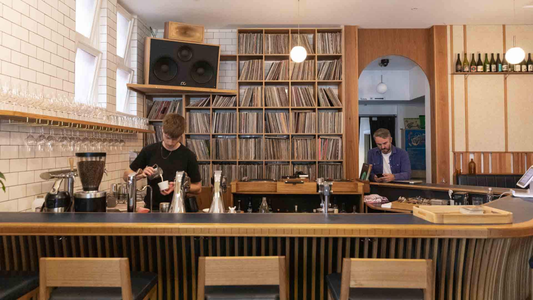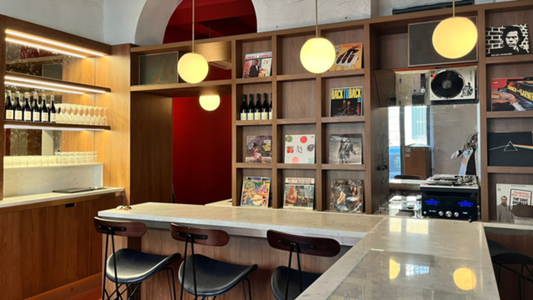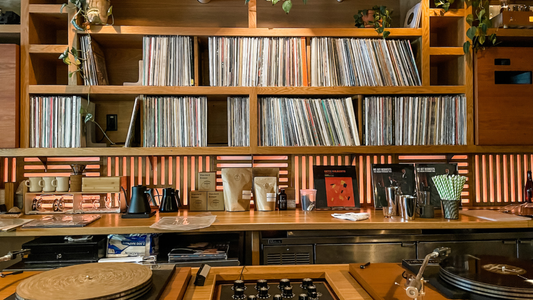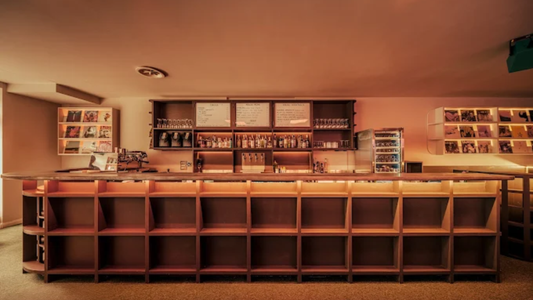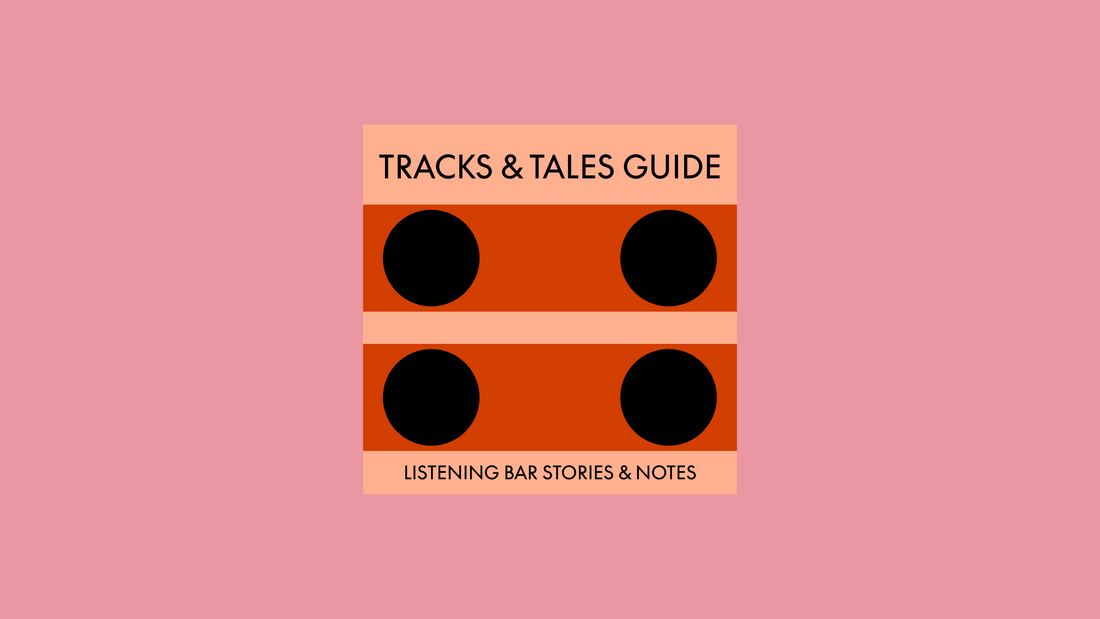
What Makes an Album Perfect for a Listening Bar?
On detail, dynamics, and the mysterious alchemy that makes some records bloom in the room.
By Rafi Mercer
You know it when it happens. A record starts, and the room changes. The bass lands with gravity, the treble shimmers without harshness, the voice carries presence as though the singer has stepped into the space. Not every album does this. Some fall flat, others fight the room. But a few open up — and those are the ones that belong on a listening bar shelf.
The question, then, is what separates them? What makes an album perfect not just for listening, but for slow listening — for a space designed to let sound breathe?
Qualities of a perfect listening bar album:
- Dynamic range — music that stretches from whisper to crescendo without losing clarity.
- Acoustic texture — instruments and voices recorded with detail you can lean into.
- Flow and sequencing — albums that tell a story from start to finish.
- Atmospheric weight — sound that shapes the mood of a room.
- Repeatability — records that reward listening again and again, revealing new layers.
In Tokyo’s kissaten, owners knew this instinctively. They built collections around albums that could hold a room in stillness for forty minutes. Miles Davis’s Kind of Blue. Bill Evans’s Sunday at the Village Vanguard. Coltrane’s A Love Supreme. These were not just admired records — they were architectural tools, capable of shaping the evening.
But it isn’t only jazz. Soul albums like Donny Hathaway’s Live, electronic works like Kraftwerk’s Trans-Europe Express, or even contemporary records like Floating Points and Pharoah Sanders’ Promises can all become perfect listening bar material. What they share is not genre but depth — layers of sound that emerge only when given attention.
Sequencing matters too. In a listening bar, albums are played whole. That means side A and side B must both carry weight. A strong opener sets the room; a weak closer can let it drift away. The arc of the record is the arc of the evening.
Atmosphere is another part of the alchemy. Some albums simply sound like night. Their tones carry a hush, a glow, an invitation to linger. Others bring warmth to a winter room, or brightness to a summer evening. The best records for listening bars are less about hits than about how they inhabit a space.
Above all, perfect albums reward repeat listening. In a world of infinite skips, the listening bar insists on patience. An album worthy of the shelf is one you can return to endlessly, discovering new textures in the brush of a cymbal, the phrasing of a vocal, the resonance of a piano chord.
So what makes an album perfect for a listening bar? It isn’t popularity, or rarity, or price. It’s the way the record meets the room — how it breathes, how it holds, how it transforms ordinary time into something shared and resonant.
Quick Questions
Does genre matter when choosing albums for a listening bar?
No. Jazz is central, but soul, electronica, reggae, and even ambient all work if they carry depth.
Why do albums need to be played in full?
Because sequencing matters — albums designed with arcs reveal their story only when heard whole.
What’s the single most important quality?
Detail. A perfect album is one that rewards attentive listening, revealing new layers every time.
Rafi Mercer writes about the spaces where music matters. For more stories from Tracks & Tales, subscribe, or click here to read more.
